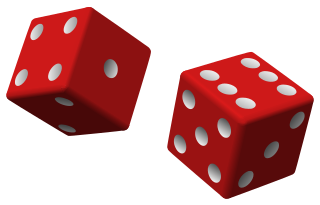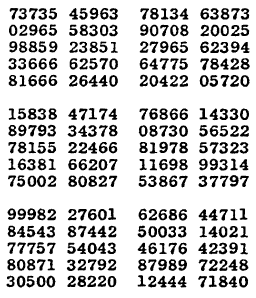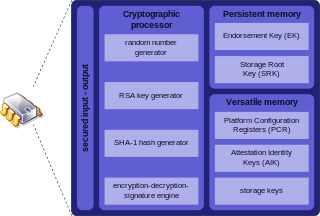 W
WRandom number generation (RNG) is a process which, through a device, generates a sequence of numbers or symbols that cannot be reasonably predicted better than by a random chance. Random number generators can be truly random hardware random-number generators (HRNGS), which generate random numbers as a function of current value of some physical environment attribute that is constantly changing in a manner that is practically impossible to model, or pseudo-random number generators (PRNGS), which generate numbers that look random, but are actually deterministic, and can be reproduced if the state of the PRNG is known.
 W
WDiceware is a method for creating passphrases, passwords, and other cryptographic variables using ordinary dice as a hardware random number generator. For each word in the passphrase, five rolls of a six-sided die are required. The numbers from 1 to 6 that come up in the rolls are assembled as a five-digit number, e.g. 43146. That number is then used to look up a word in a word list. In the English list 43146 corresponds to munch. By generating several words in sequence, a lengthy passphrase can be constructed.
 W
WIn computing, a hardware random number generator (HRNG) or true random number generator (TRNG) is a device that generates random numbers from a physical process, rather than by means of an algorithm. Such devices are often based on microscopic phenomena that generate low-level, statistically random "noise" signals, such as thermal noise, the photoelectric effect, involving a beam splitter, and other quantum phenomena. These stochastic processes are, in theory, completely unpredictable, and the theory's assertions of unpredictability are subject to experimental test. This is in contrast to the paradigm of pseudo-random number generation commonly implemented in computer programs.
 W
WRussell Impagliazzo is a professor of computer science at the University of California, San Diego specializing in computational complexity theory. He obtained a doctorate from the University of California, Berkeley. His advisor was Manuel Blum. He is a 2004 Guggenheim fellow.
 W
WLavarand was a hardware random number generator designed by Silicon Graphics that worked by taking pictures of the patterns made by the floating material in lava lamps, extracting random data from the pictures, and using the result to seed a pseudorandom number generator.
 W
WA Million Random Digits with 100,000 Normal Deviates is a random number book by the RAND Corporation, originally published in 1955. The book, consisting primarily of a random number table, was an important 20th century work in the field of statistics and random numbers. It was produced starting in 1947 by an electronic simulation of a roulette wheel attached to a computer, the results of which were then carefully filtered and tested before being used to generate the table. The RAND table was an important breakthrough in delivering random numbers, because such a large and carefully prepared table had never before been available. In addition to being available in book form, one could also order the digits on a series of punched cards.
 W
WThe MIXMAX generator is a family of pseudorandom number generators (PRNG) and is based on Anosov C-systems and Kolmogorov K-systems. It was introduced in a 1986 preprint by G. Savvidy and N. Ter-Arutyunyan-Savvidy and published in 1991.
 W
WA noise generator is a circuit that produces electrical noise. Noise generators are used to test signals for measuring noise figure, frequency response, and other parameters. Noise generators are also used for generating random numbers.
 W
WQuintessenceLabs Pty Ltd. is a cybersecurity company headquartered in Canberra, Australia with offices in San Jose, California. QuintessenceLabs produces encryption key and policy management products that conform to the Key Management Interoperability Protocol (KMIP), as well as a hardware random number generator, development of a quantum key distribution (QKD) system, and other encryption solutions that include automatic key zeroization.
 W
WRandom.org is a website that produces random numbers based on atmospheric noise. In addition to generating random numbers in a specified range and subject to a specified probability distribution, which is the most commonly done activity on the site, it has free tools to simulate events such as flipping coins, shuffling cards, and rolling dice. It also offers paid services to generate longer sequences of random numbers and act as a third-party arbiter for raffles, sweepstakes, and promotions.
 W
WTrusted Platform Module is an international standard for a secure cryptoprocessor, a dedicated microcontroller designed to secure hardware through integrated cryptographic keys.